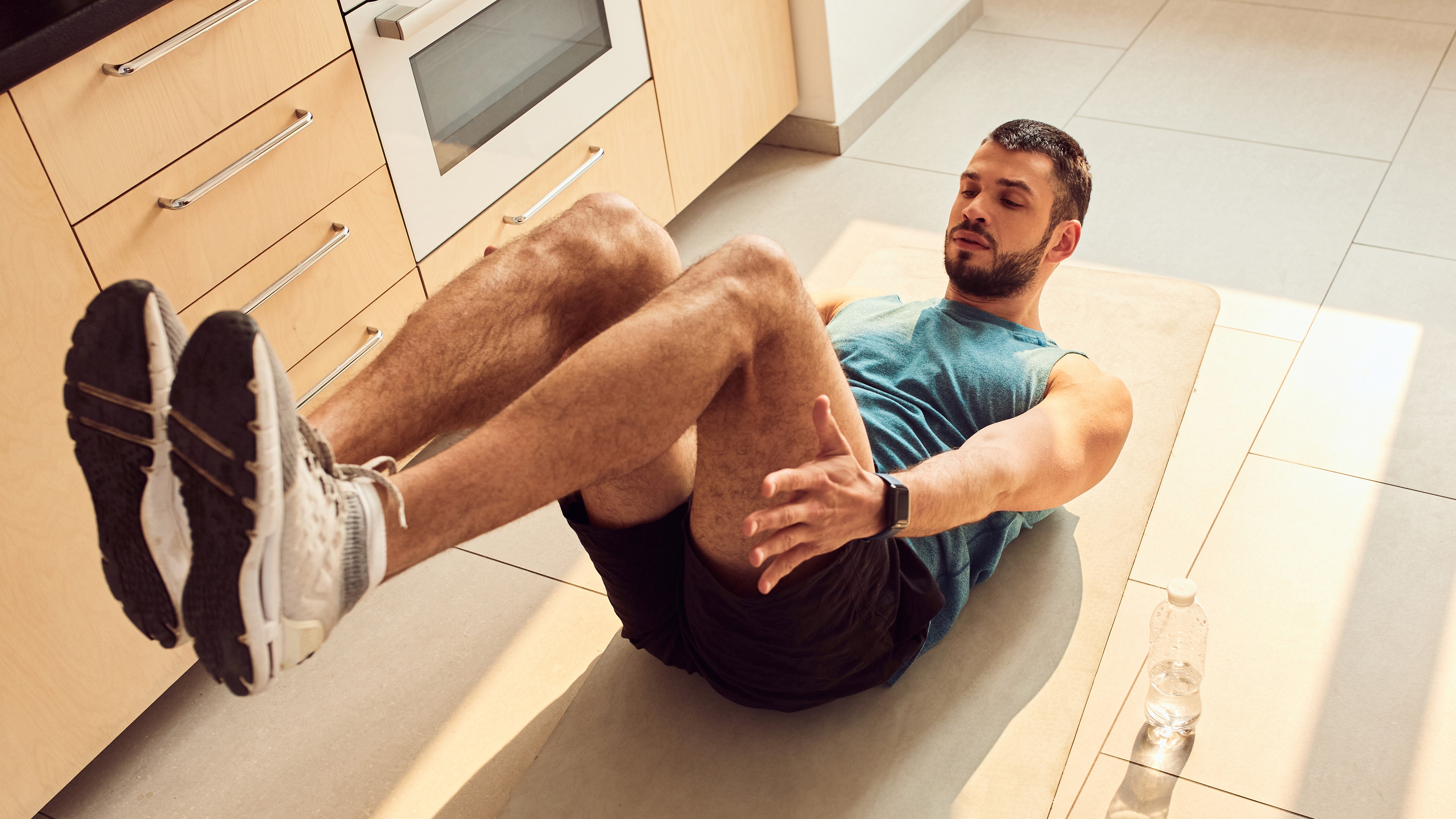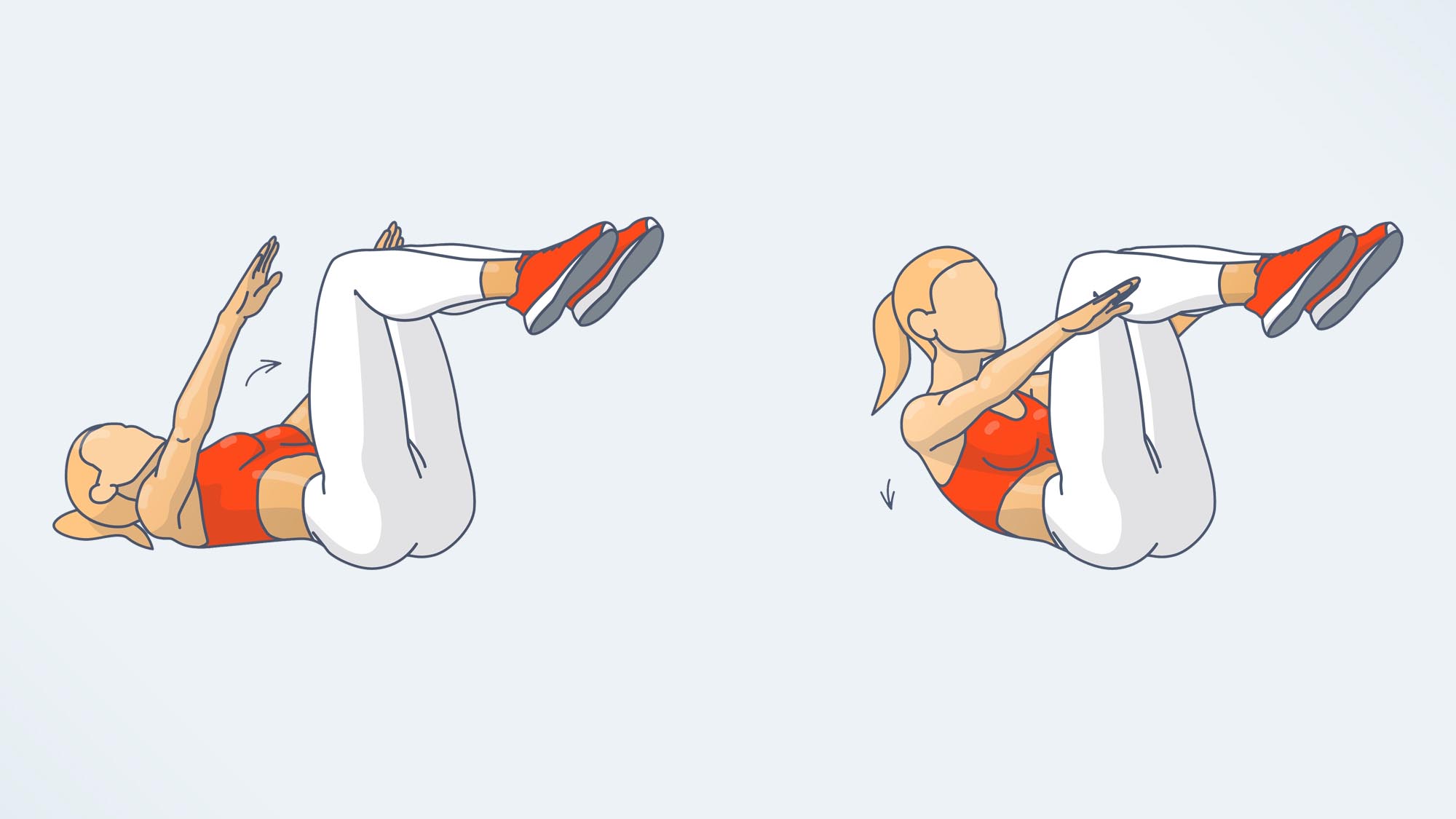I did tabletop crunches every day for a week — here’s what happened to my lower abs
When it comes to working those lower abs, there’s nothing like a little focus

My most recent week-long challenge was the three-legged plank, which is an excellent core workout. Based on that experience, I airily opined that following this with a week of tabletop crunches would be something of a breeze. I was half joking, of course, but it turns out I shouldn’t have been joking at all. There is no one core exercise to rule them all. You have to do a range of moves to get to every muscle.
What is the tabletop crunch?
This move is a variation on the basic crunch, which is more focused than the sit-up, and far less likely to cause lower back issues or to overwork the hip flexors. It’s for reasons such as these that sit-ups have somewhat fallen out of favour in recent years, with the plank in all its variations stepping into the limelight. But crunches and sit-ups, done correctly, deserve a place in your exercise regime. They work.
Like other crunches, the tabletop tests your abdominals, but because your legs are raised (more on this below), your lower abs get much more of a workout. The raised leg position means you will also be giving your hip flexors some work to do, but make no mistake, this is overwhelmingly a core-strength exercise. And as I will never tire of noting, a strong core improves posture and stability, helps to prevent or alleviate lower back problems, and makes it easier to carry out daily activities (even something as ordinary as turning to look behind you), as well as aiding sports performance. Core work will also help you get defined abs, but you’re going to have to eat well and get plenty of aerobic exercise, too. You can target muscles to build them, but you cannot target fat to lose it in specific areas of your body. If visible abs are your goal, you'll need to focus on your body fat percentage — here's how to calculate your body fat percentage, and why it matters.
How to do a tabletop crunch

In terms of starting position, this is easy; performing the move correctly is another matter. And as for maintaining form as you begin to tire…
- I recommend using a mat for this one. Begin by lying on your back. Now raise your legs and bend your knees so your thighs are at right angles to your torso and your lower legs are parallel to the floor. Hold this position throughout. Do not draw your legs closer to your chest.
- With your hands resting lightly on the sides of your head, exhale and engage your core to raise your shoulders off the floor. With your hands where they are, you won’t be able to pull your head toward your chest. You will often see people placing their hands at the back of their head and doing exactly that. It’s bad form, you’re kidding yourself that you’re doing great work, and you could hurt yourself. Be careful. You can also place your arms straight above your body, and raise them up, alongside your body as per the illustration above.
- When you can contract your abs no further, slowly lower back to the floor, inhaling as you go. That’s one rep. Aim for three sets of 5-10, depending on your fitness and strength.
- You may find yourself beginning to rock back and forth to convince yourself you are completing reps when you’re tired and hurting. This is a waste of your time. If you can’t maintain form, just do fewer reps until you’re stronger.
Here's what I learned when I did tabletop crunches for a week
I felt this move deep in my lower core
I usually use a stability ball when I do crunches, so I found this one tough on day one. I’m used to a greater level of movement, so performing crunches from a flat position (rather than leaning back over the ball) was frustrating. I had to work hard to just use my core muscles, which took a beating. I managed three sets of 10, but I confess I was rocking my body for those final few reps. Afterwards, I felt it deep — very deep — in my lower core.
I had to slow down to focus on my form
On the second day, my form was far better — more consistent, smoother — on the first two sets, but again I fell back to the rocking motion towards the end of the third set. It’s easy to see how this could cause a back issue: If you’re not physically ready to perform this move you will try to do it any way you can, and because it’s possible to perform what looks like a crunch by bringing your back into play, you risk an injury. And, of course, you won’t get the benefit of the move. Done properly, this is an intense and focused move — It demands your attention.
On day three I completed three sets of 15 and the following day I upped this to three sets of 20, with 20-second breaks. I also tried something: I crossed my ankles. This made it easier to keep my raised legs steady, as they were inclined to wander a little to the left or right. It’s cheating a little, but it might be a good way for you to start off.
Sign up to get the BEST of Tom's Guide direct to your inbox.
Get instant access to breaking news, the hottest reviews, great deals and helpful tips.
I noticed an improvement
By day five, I felt I was in a groove (I kept up the challenge while I was on vacation and didn’t resent it one bit). My form was good, my ankles were uncrossed, and my reward was a dip in the pool and a celebratory cocktail.
By the end of the week, I could do 40 crunches without taking a break (the first time I had managed that number). By taking breaks, I had done more during the week, but this consistent effort was a noticeable improvement in a short time. This was not, of course, a result of greater strength, but of better form and increased confidence.
The tabletop crunch is a great move for your lower abs and it also makes you aware of them — days later, I can isolate and contract them without having to flex my other core muscles. I may have been able to do this before the challenge, but I just didn’t know it. This really is a good one: give it a try.
More from Tom's Guide
John is a writer and editor based in London. He was worked for magazines such as Runner’s World, Men’s Health, Women’s Health and Cosmopolitan. A keen runner, what he lacks in ability he makes up for with enthusiasm and excuses.


